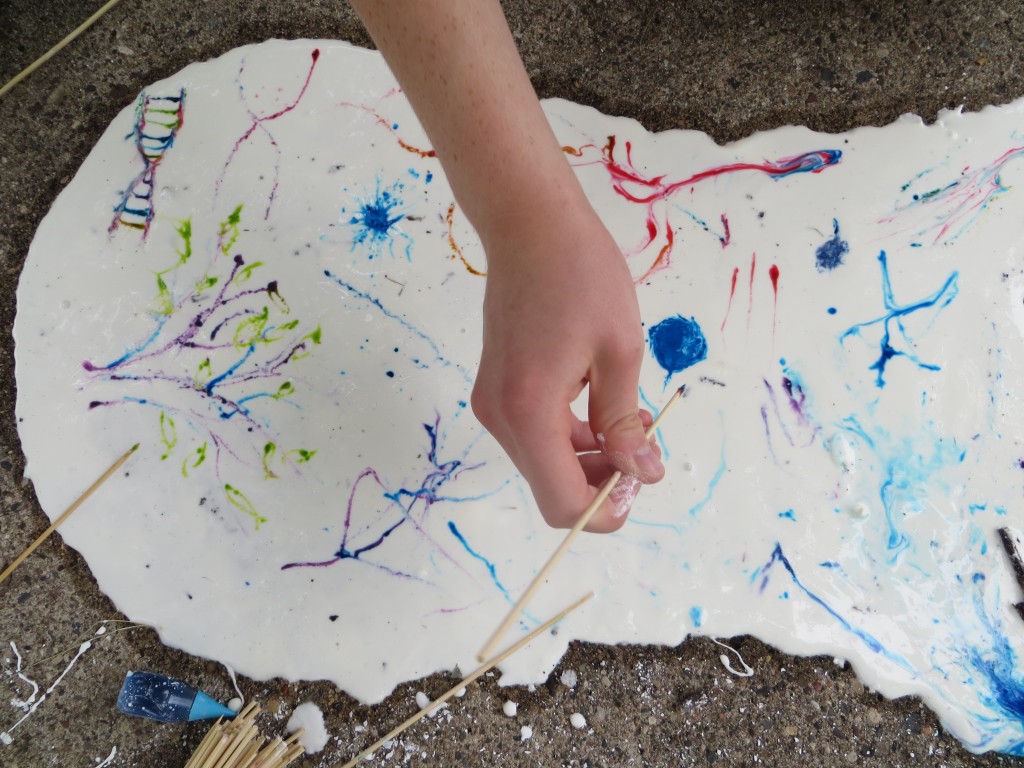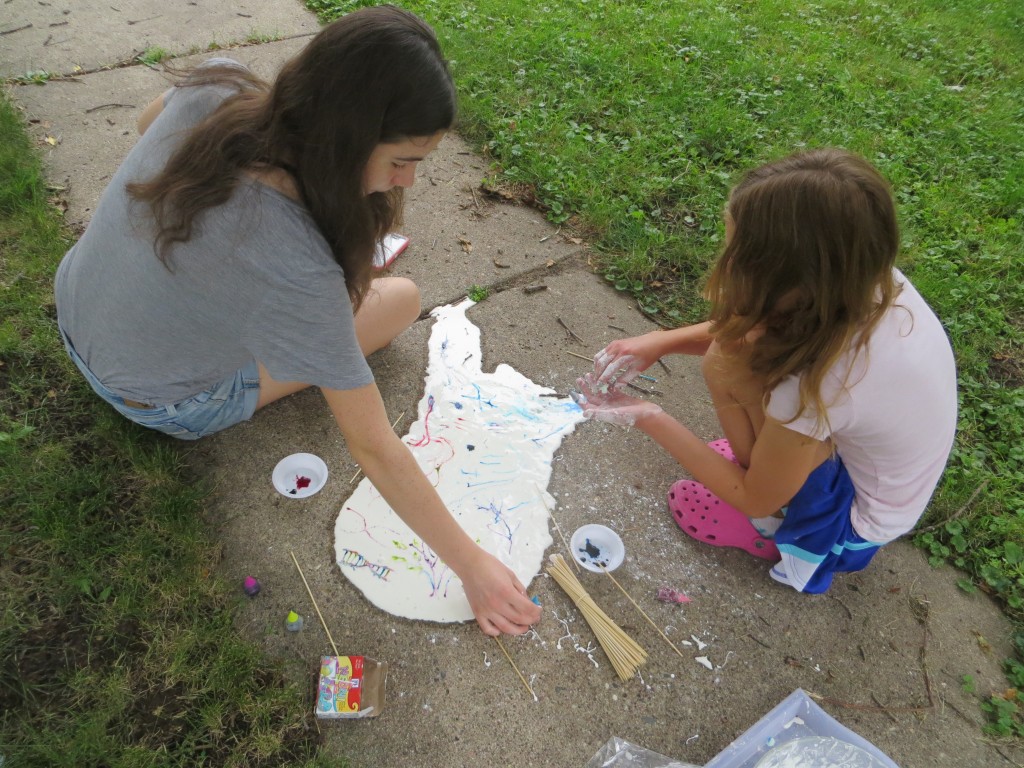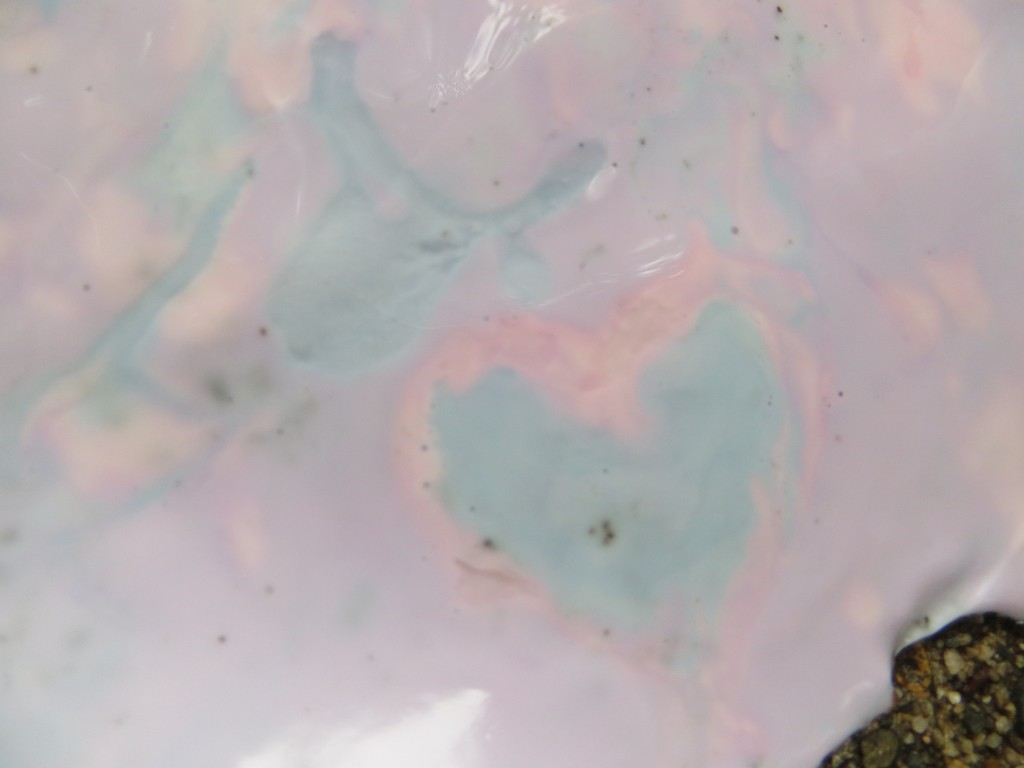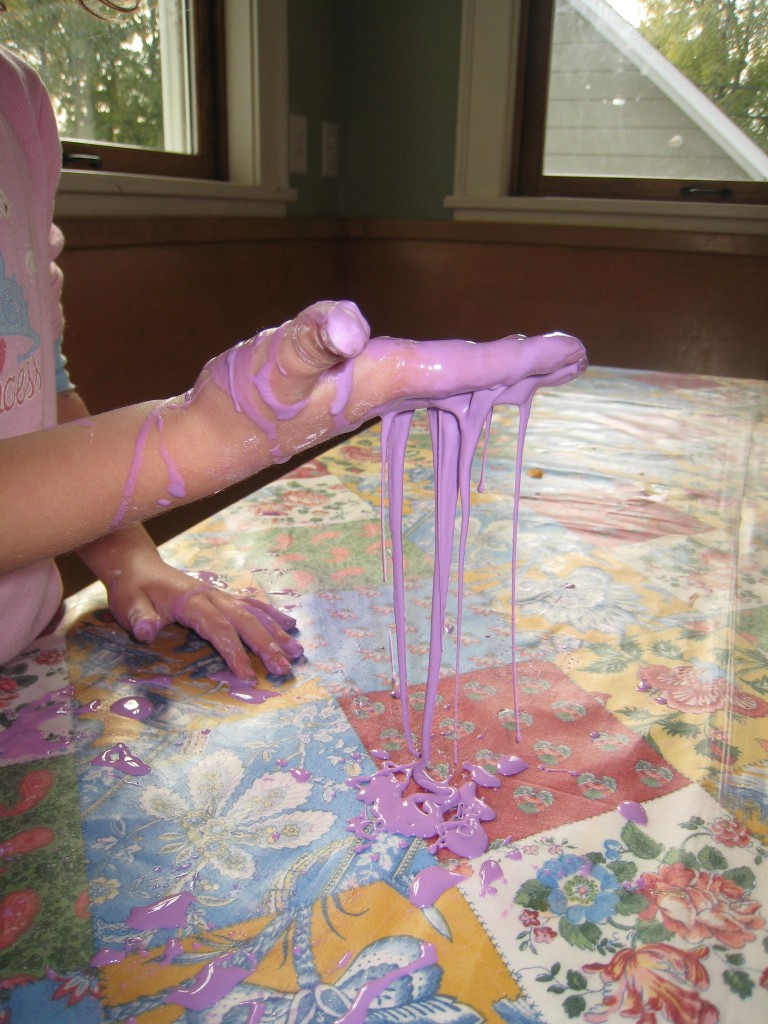Tag: cornstarch’
Cornstarch Frescoes
- by KitchenPantryScientist
Made corn starch frescoes from my book “Outdoor Science Lab for Kids” on @fox9morning today! Mix 2 parts cornstarch with 1 part water, pour out on baking sheet or sidewalk and paint with watercolors or food coloring! (Wear old clothes if painting with food coloring) Let frescoes dry, or wash away with a garden hose.
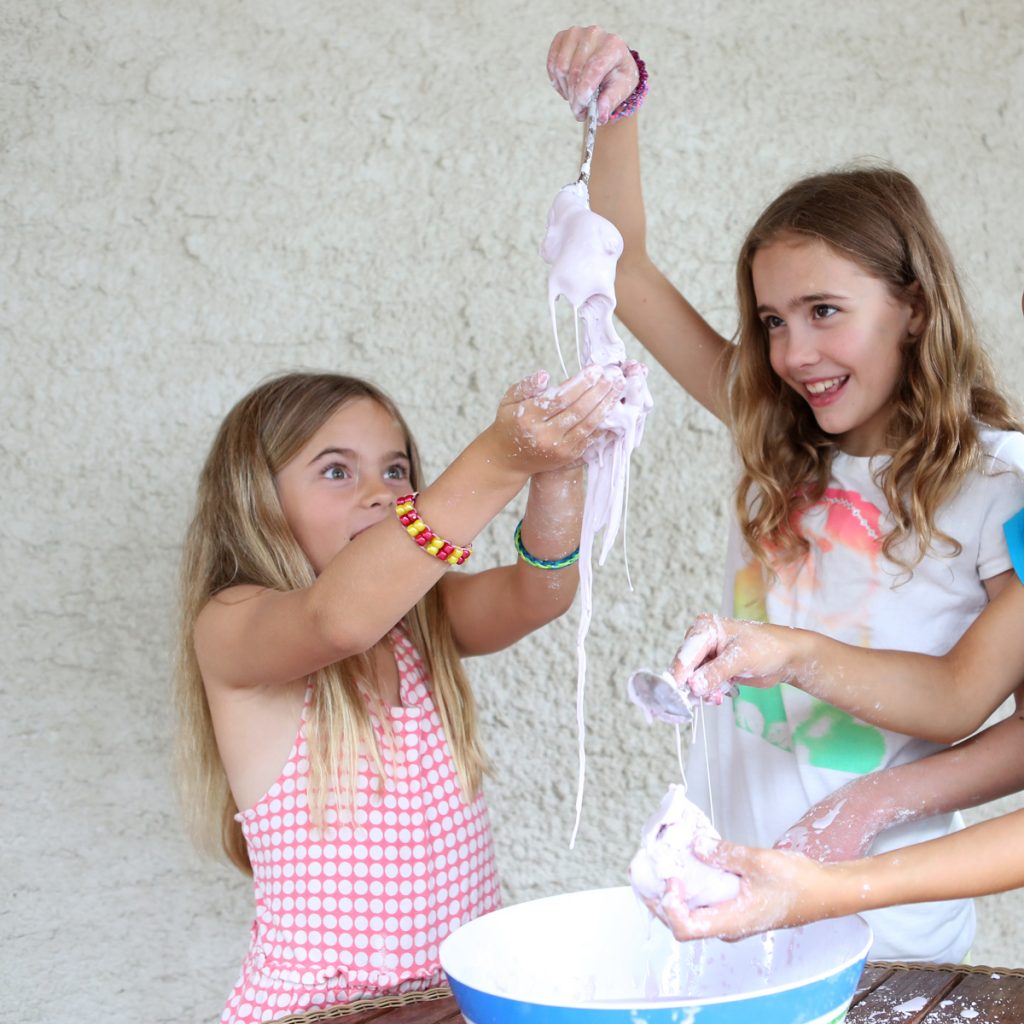
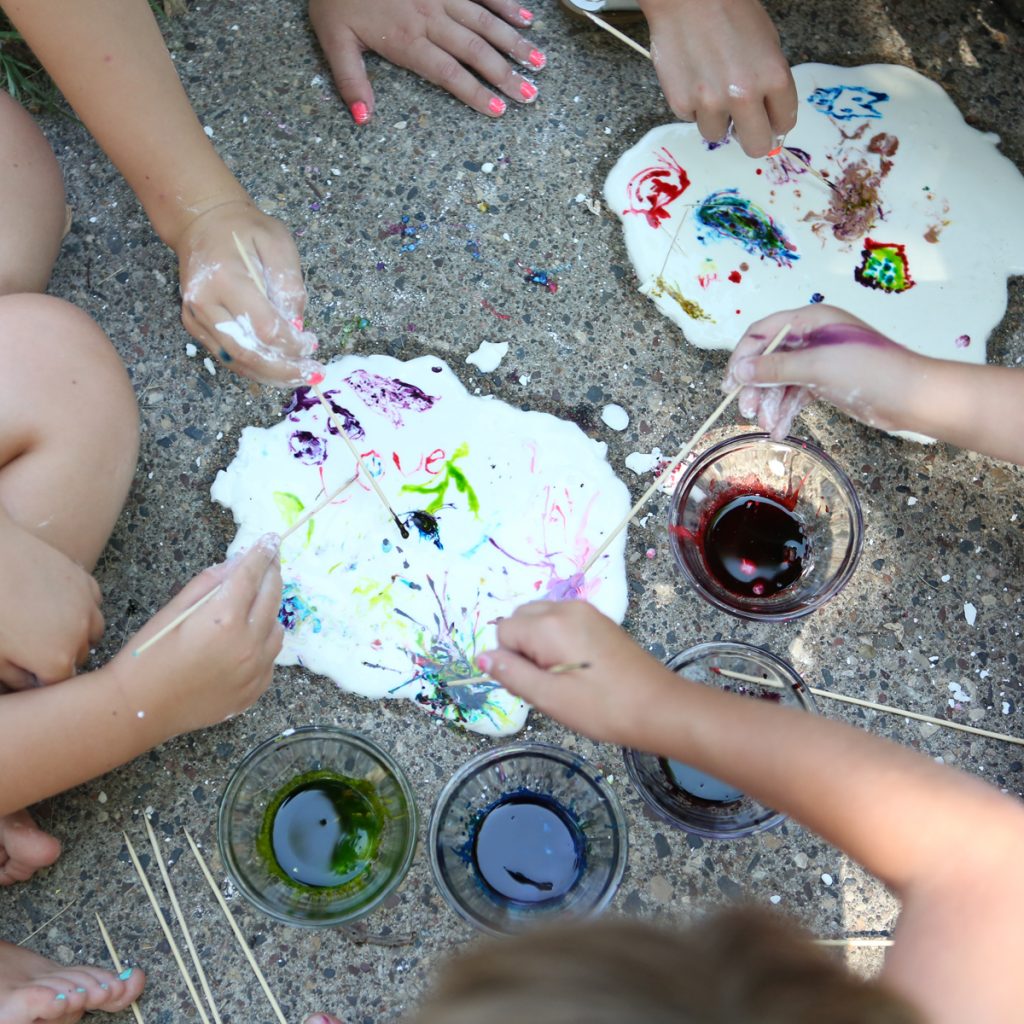
Cornstarch Frescoes
- by KitchenPantryScientist
Want to get a taste of what it’s like to do a fresco painting?
Everyone from the ancient Minoans on the island of Crete, to Leonardo de Vinci, used this classic technique to paint into wet plaster made of lime, sand and clay. It was tricky, since you could only do a small area at a time, and the colors often got lighter as they dried.
Some frescos have lasted thousands of years as the result of the chemical reaction between the fresco materials and atmospheric carbon dioxide, which form calcium carbonate, the same material limestone is made of.
We created this experiment using a cool, fun-to-play with false fresco material made with a mixture of cornstarch and water. To make it more science-y, you can make it with cornstarch and red cabbage juice (instead of water) in order to paint with acids and bases!
Remember, all chopping and boiling of red cabbage should be done with adult supervision. The pH fresco won’t stain your driveway, but depending on the food coloring you use, the painted fresco may leave marks on concrete. You can also do this in small, flat containers to contain the mess, or if you want to do it indoors.
You’ll need
– 16 oz Corn starch
– scant 1 ½ red cabbage juice* for an acid/base fresco or scant 1 ½ cup water for painted fresco
– baking soda and vinegar for pH fresco
– food coloring for painted fresco
-toothpicks or small paintbrushes
*To make red cabbage juice, chop up ½ head of red cabbage, cover with water and boil for 10 minutes. Strain out cabbage. More detailed instructions here.
Step 1: Mix together the cornstarch and either water or red cabbage juice. The resulting mixture will look like glue. If it’s too dry and crumbly, just add a little more water until the consistency seems right. You should be able to roll it into a ball, but it should drip like a liquid when you stop moving it around.
Step 2. Pour some cornstarch mixture onto a clean, flat spot on a driveway or sidewalk. Alternately, you can pour it into a tray or pie tin.
Step 3. When the mixture has flattened out, let it sit for 5 or 10 minutes before you begin painting on it.
Step 4. For an acid/base fresco made with red cabbage juice, put vinegar in one cup and a few tablespoons baking soda mixed with ¼ cup water in a second cup. Use toothpicks or paint brushes to make designs on the cornstarch with the vinegar (turns red cabbage cornstarch mix pink) and baking soda solution (turns red cabbage cornstarch mix blue.) You can also paint on this fresco with food coloring.
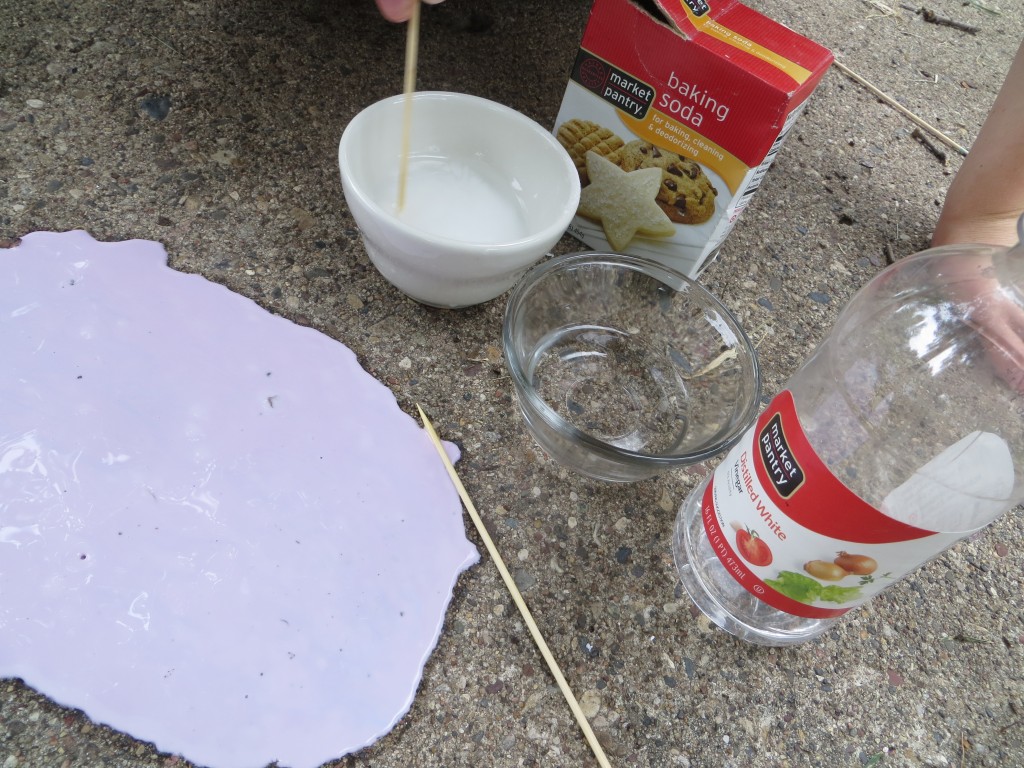
Do acid/base painting with vinegar and baking soda on fresco made with cornstarch and red cabbage juice. KitchenPantryScientist.com.
For a painted fresco, put food coloring on a plate and use toothpicks or paintbrushes to paint designs on your fresco.
Step 5. Let your frescos dry to see what happens to the colors.
Step 6. Wash your frescos off the sidewalk using water from a hose.
The Science Behind the Fun:
The substance you made using water and cornstarch is called non-Newtonian, because it doesn’t act the way we expect a liquid to behave, and acts more like a solid if you stir it around or try to move it quickly.
When you use food coloring to paint on the cornstarch goo, the water-based pigments (color molecules) in the food coloring are absorbed into the cornstarch mixture, but they don’t travel diffuse very far since the cornstarch mixture is so thick. Here’s another diffusion experiment you can try called Homemade Window Stickies.
If you try the acid/base painting, you’ll see that vinegar, an acid, makes pink lines and baking soda solution, a base, makes blue or green lines. The pigment from the red cabbage juice is an acid-base indicator that changes shape depending on pH, absorbing light differently and changing color.
How to Make Cornstarch Goo video
- by KitchenPantryScientist
[vsw id=”pFyLGFXrIhw” source=”youtube” width=”425″ height=”344″ autoplay=”no”]
To read my printed post on this experiment, click here.
Cornstarch Goo-Liquid or Solid?
- by KitchenPantryScientist
This experiment is easy, non-toxic and so much fun that it is worth every bit of the mess it makes. Your kids will love it!
All you need is a cup of cornstarch and half a cup of water with a little food coloring in it (purple and green and red would be gross!) Mix the two ingredients to a medium-size bowl with a spoon or your fingers. The goo should be the consistency of syrup.
Now, play with the mixture! You will discover that it behaves like a solid when you agitate it, or move it quickly, and like a liquid when you let it sit still. Pour some onto plates or into bowls if you want to. We poured it directly onto our table which was pretty messy, but lots of fun! Hold a handful on your palm and watch it drip between your fingers! Roll it into a ball. If it gets too dry, just add a little more water. You can easily clean the goo off of flat surfaces using a plastic spatula. Wash it off hands with water.
Cornstarch molecules are like long ropes. When you leave them alone, or move them slowly, they can slide past each other and look like a liquid. However, if you squeeze them, stir them or roll them around in your hands, the ropey molecules look and feel more like a solid. Materials like cornstarch goo are known as non-Newtonian fluids, since they don’t have the normal properties of either a liquid or a solid.
Click here to watch my video on how to make cornstarch goo.
